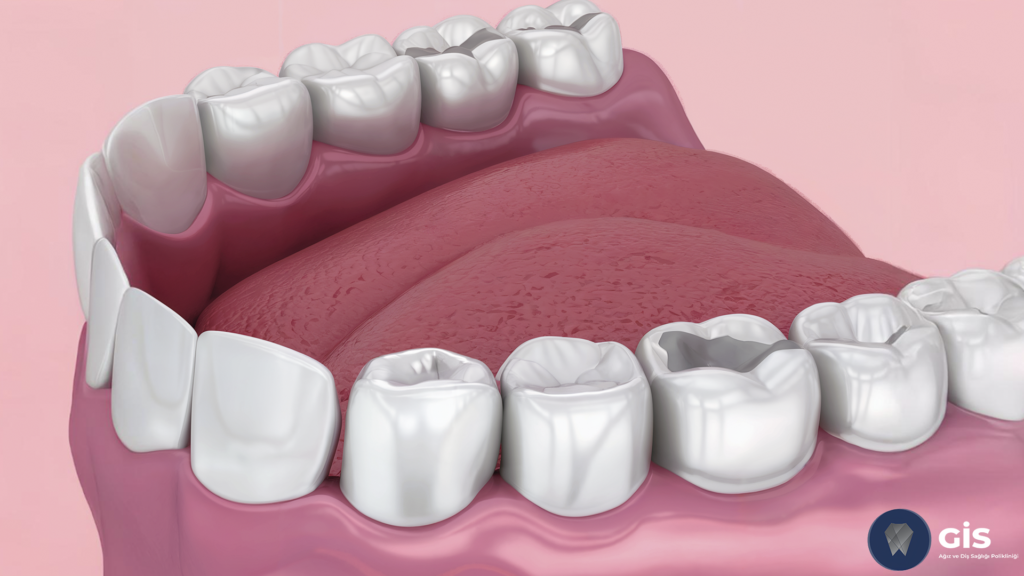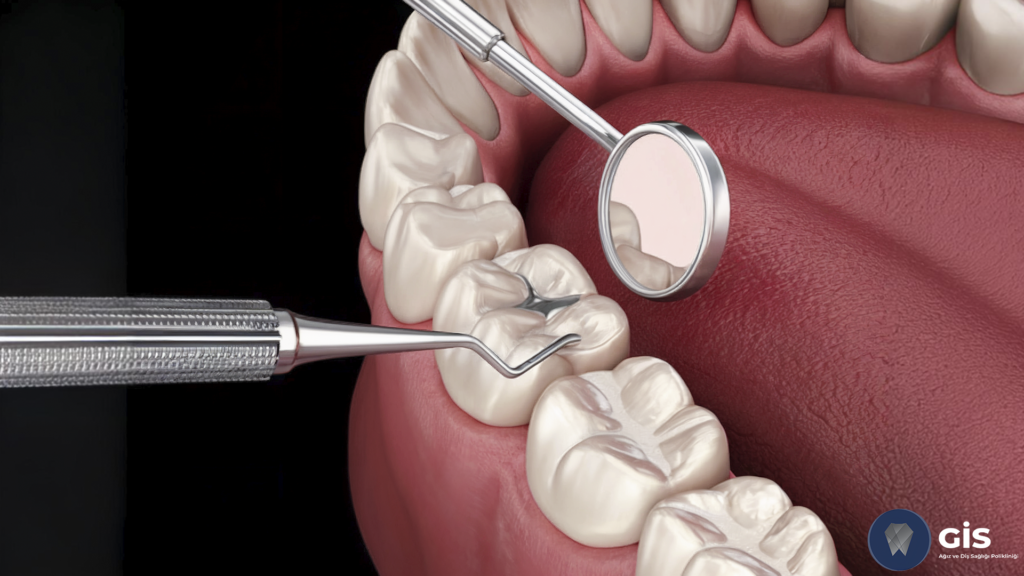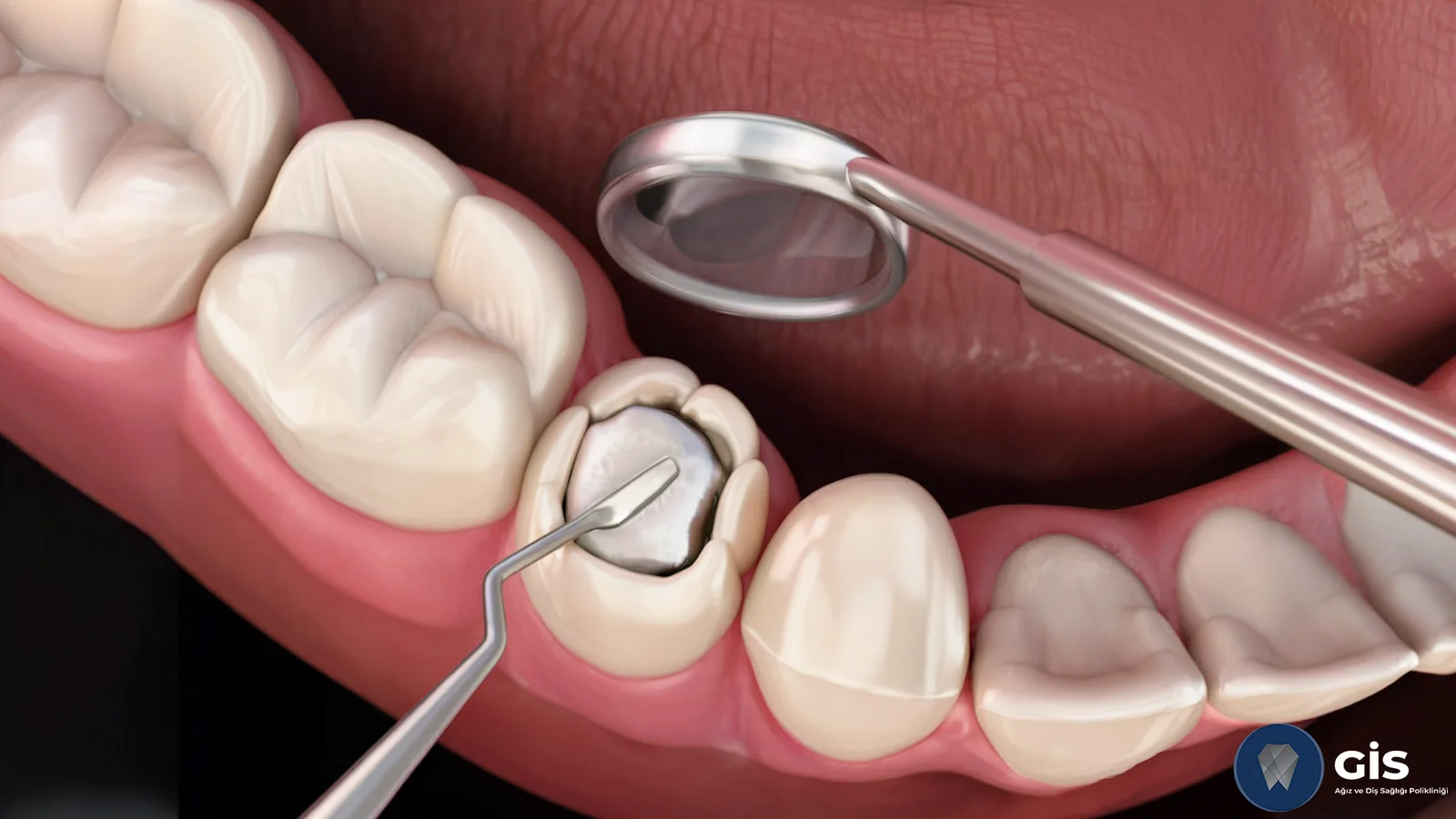Dental Filling
Dental filling is a treatment method used to repair damage to teeth such as cavities, cracks or fractures. This treatment aims to preserve oral health by restoring the natural structure and function of the tooth. Filling materials fill the damaged area and reshape the tooth. Dental filling is a procedure that is frequently performed in the field of dentistry and is usually completed in a short time.
The dental filling process is performed by the dentist and involves several steps. First, the dentist cleans the damaged area and removes any decay or damaged tissue. Then, the appropriate filling material is selected and placed on the tooth. The filling material is shaped and hardened to match the natural structure and color of the tooth. This process allows the tooth to become functional again and offers an aesthetically pleasing appearance.
Dental fillings can be made from different materials. There are various filling materials such as composite resin, amalgam, porcelain and gold. Each material has its own advantages and disadvantages. Composite resin fillings match the natural tooth color and are aesthetically preferred. Amalgam fillings, on the other hand, are durable and are commonly used in back teeth. Porcelain and gold fillings are long-lasting and durable, but their costs are higher than other types of fillings.
How to Perform a Tooth Filling
The dental filling process usually consists of a few simple steps. First, the dentist cleans the decayed or damaged area. During this procedure, the patient is relieved by applying local anesthesia. After the cleaning process is completed, the cleaned area of the tooth is filled with filling material. Filling material usually consists of materials such as composite resin, amalgam or porcelain. After the filling is placed, the dentist corrects and polishes the shape of the filling, restoring the natural appearance and function of the tooth.
- Examination and Preparation: Before starting the dental filling process, the dentist examines the tooth carefully and may take x-rays. This is important to determine the extent and location of the bruise or damage. During the examination, your dentist can decide which filling material is best for you.
- Local Anesthesia Application: Local anesthesia is applied to ensure the comfort of the patient during the dental filling procedure. Anesthesia prevents pain by numbing the area where the procedure will be performed. This ensures that the patient is comfortable and pain-free during the procedure.
- Cleaning the Damaged Area: After the effect of anesthesia begins, the dentist begins to clean the decayed or damaged area. This procedure is performed using special dental tools and care is taken to preserve the healthy tissue of the tooth. Once the decayed or damaged tissue is completely cleaned, the tooth is ready for filling.
- Placement of Filling Material: After the cleaning process is completed, the cleaned area of the tooth is filled with appropriate filling material. A variety of filling materials can be chosen, such as composite resin, amalgam, porcelain or gold. The dentist carefully places and shapes the selected filling material into the tooth.
- Shaping and Hardening of the Filling: After the filling material is placed, the dentist corrects the shape of the filling and shapes it to fit the natural tooth structure. Composite resin fillings are hardened using a special light. Amalgam and porcelain fillings harden over time. Hardening the filling allows the tooth to regain its natural function.
- Finishing Touches and Polishing: After the filling has hardened, the dentist applies the finishing touches. This involves ensuring that the filling is compatible with the rest of the tooth and provides a smooth chewing surface. The filling is made smooth by polishing with special tools. The polishing process improves the aesthetic appearance of the tooth and increases the durability of the filling.

Filling Types
The materials used for dental fillings may vary. The most commonly used filling materials are:
- Composite Resin Filling: It is the most aesthetically advantageous filling type. Since it is tooth-colored, it harmonizes with natural teeth. It is especially preferred on front teeth. Composite resin fillings can be completed quickly during the process because they are light-cured. Additionally, these fillings are ideal for small to medium-sized cavities and can strengthen tooth structure.
- Amalgam Filling: This type of filling, which is silver in color, is known for its durability. It is commonly used in posterior teeth. Amalgam fillings are long-lasting because they are generally resistant to chewing force. These fillings are suitable for large areas of decay and have fewer aesthetic concerns due to their low visibility at the back of the tooth.
- Porcelain Filling: It is tooth-colored and is preferred for aesthetics and durability. It is prepared in a laboratory environment and bonded to the tooth. Porcelain fillings are often called inlays and onlays and fit the tooth perfectly. These fillings retain their colors and are stain-resistant, therefore providing an aesthetic appearance for a long time.
- Gold Filling: Known for its durability and longevity. It is less preferred today due to aesthetic concerns. Gold fillings are biocompatible and do not pose any risk of allergies. It is generally used on back teeth due to its high cost and striking appearance.
Each type of filling has its own advantages and disadvantages. The quality and durability of fillings may vary depending on the type of material used and the placement technique of the filling.
Things to Consider After Filling
After dental filling, you need to take some precautions to protect the health of your teeth. You should avoid hot and cold foods within the first few hours of the filling. Also, be careful not to chew for a few hours to allow the filling to fully harden and adapt. Regular brushing and flossing after fillings prolongs the life of fillings and protects your overall oral health.

Dental filling cost
Dental filling prices may vary depending on the material used, the location of the tooth and the extent of damage. Composite fillings are generally more expensive because they provide an aesthetic and natural appearance. Amalgam fillings are generally more economical. Porcelain and gold fillings are among the most expensive options. Your dentist will help you choose the best filling material to suit your needs and budget.



